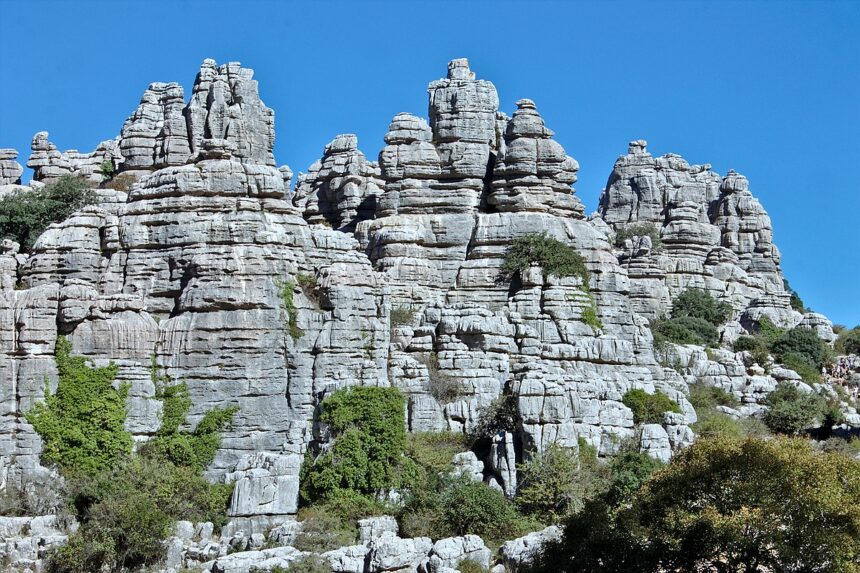Imagine a landscape where the ground can suddenly vanish beneath your feet, where rivers disappear into the earth, and towering rock spires rise like ancient guardians. This is the mysterious world of Karst Topography, a realm shaped by the relentless dissolving power of water.
Introduction: Unveiling the Secrets of Karst Topography
In this blog post, we’ll journey into these sculpted landscapes. Let’s uncover the science behind their formation—the essential ingredients and the transformative processes involved. By the end, you’ll gain a deeper understanding of these unique geological wonders and their importance to our planet.
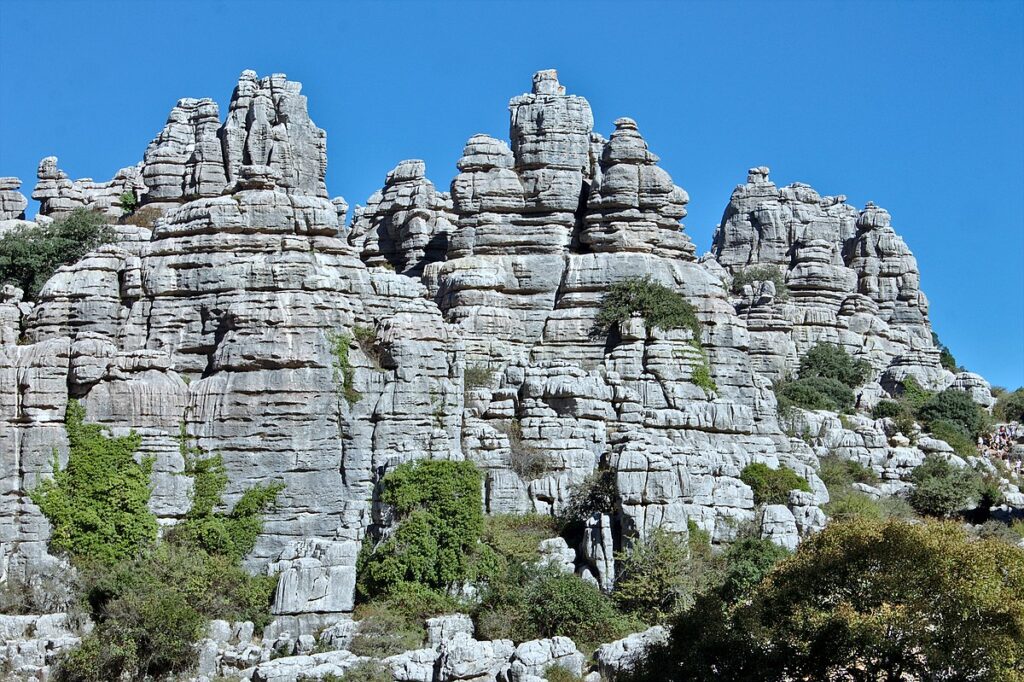
Defining Karst: Dissolving the Landscape
The term “karst” originates from a limestone plateau in Slovenia, a region renowned for its otherworldly subterranean landscapes. It describes a terrain defined by the dissolving action of water on soluble rock. Think of it like a slow-motion sculpture, where slightly acidic water gradually eats away at the rock, creating a unique suite of features above and below the surface.
Karst landscapes aren’t just visually striking; they hold secrets about our planet’s geology, hydrology, and even the evolution of life.
The Essential Ingredients: Soluble Rock, Water, and Carbon Dioxide
Karst landscapes are only born in some places. They require a unique recipe. The first essential ingredient is soluble rock—limestone, dolomite, and gypsum. Unlike their tougher cousins like granite, these rocks are vulnerable to a seemingly innocuous substance: water.
However, ordinary water isn’t enough. It needs a special accomplice: carbon dioxide. As rainwater falls through the atmosphere, it absorbs carbon dioxide, transforming into a weak but persistent acid. This slightly acidic water is the key that unlocks the sculpting of karst landscapes by chemical weathering, known as carbonation.
Witnessing Transformation: The Process of Karst Formation
The weathering process of limestone beds begins with acidic water seeping into cracks and crevices of the soluble rock. Over time, relentless dissolving widens these cracks into channels, passages, and eventually vast underground networks. The surface doesn’t escape unscathed—it becomes pitted with sinkholes, depressions, and a distinctive uneven appearance.
As erosion continues above and below the ground, spectacular karst formations emerge – caves adorned with otherworldly formations, towering rock pinnacles, and disappearing rivers that vanish only to reappear miles away.
Different Types of Karst Landforms
Have you ever wondered what lies beneath landscapes that seem to defy the laws of nature? Karst topography holds the answer, creating a realm of disappearing rivers, yawning chasms, and towering rock formations. Let’s delve into the diverse and awe-inspiring features that define these unique landscapes.
Let’s delve into some of the most iconic features that define karst topography and discover their fascinating secrets.
Sinkholes: Where the Ground Disappears
Imagine walking across a seemingly solid field when the earth suddenly opens beneath your feet. Sinkholes, a hallmark of karst topography, occur when underground caverns collapse, leaving dramatic depressions on the surface. They can range from small dips to massive craters capable of swallowing entire buildings.
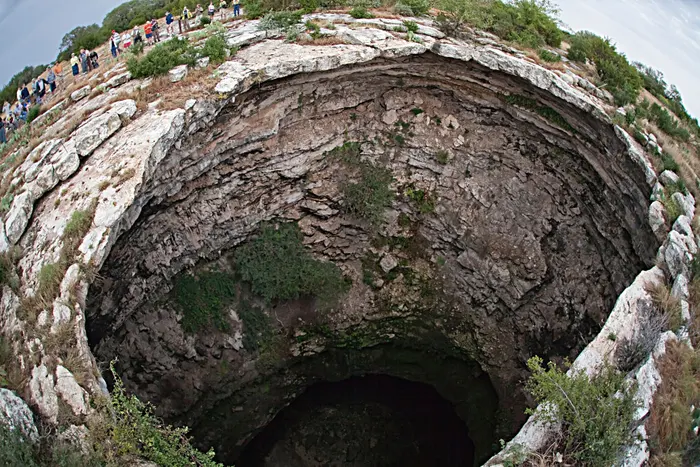
Caves: Exploring the Subterranean World
Karst regions are honeycombed with a labyrinth of caves. Formed by the relentless dissolving of rock, these caves offer gateways into a hidden world. They might house glittering stalactites and stalagmites, underground rivers, and even unique ecosystems adapted to life in the dark.
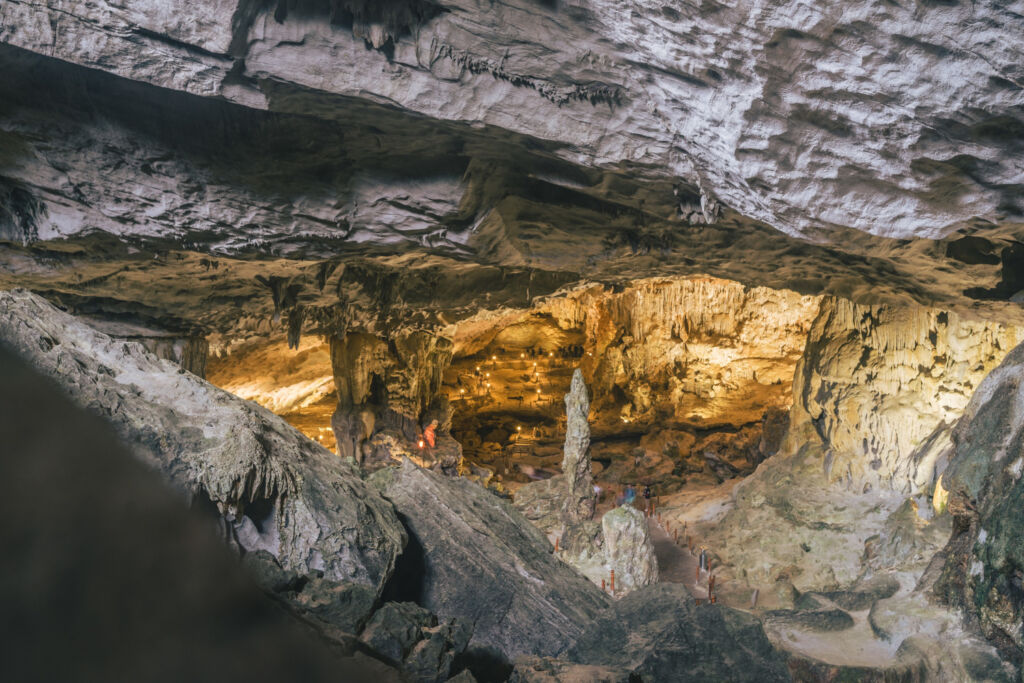
Karst Towers: Pillars of Weathered Rock
Rising like ancient sentinels, karst towers are remnants of a landscape slowly eroded. These isolated rock pillars, often sculpted into fantastical shapes, create an otherworldly and breathtaking sight within karst regions.
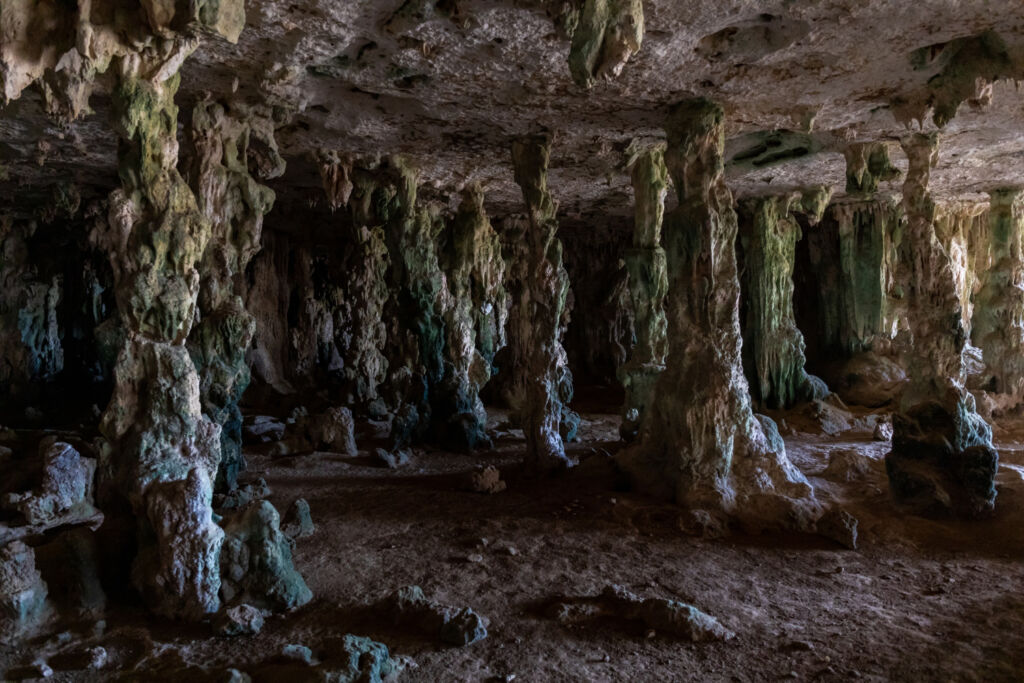
Springs and Disappearing Streams: The Water Cycle in Karst
In karst topography, the familiar pattern of rivers and streams gives way to a perplexing mystery. Streams often plunge into the earth, only to resurface miles away. Springs bubble forth from hidden depths, marking the resurgence of these underground waterways.
Poljes: Large, Enclosed Karst Depressions
Poljes are expansive, flat-bottomed valleys entirely enclosed by the steep walls of karst terrain. These unique depressions can become temporary lakes during heavy rains or host fertile farmland, demonstrating the diverse landscapes found within karst areas.
The Importance of Karst Landscapes:
Did you know that roughly a quarter of the world’s population relies on drinking water sourced from karst landscapes? These seemingly barren formations hold remarkable secrets that impact our lives far beyond their unusual beauty.
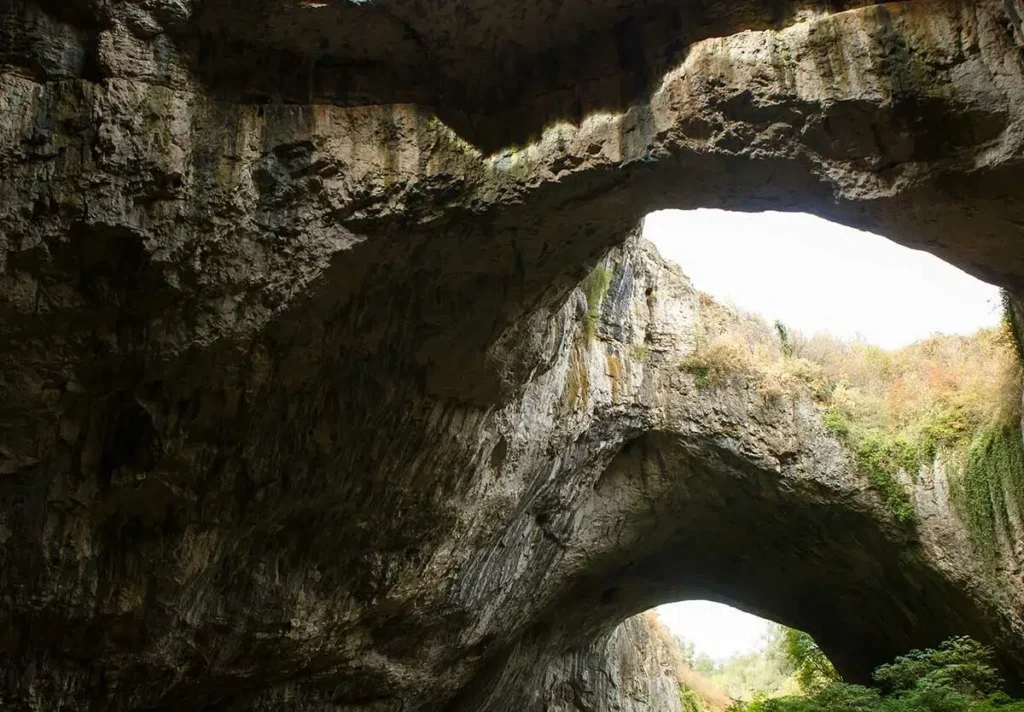
This section delves into the vital importance of karst topography. It’ll uncover the unique ecosystems they foster, the vast freshwater resources they conceal, and the boundless opportunities for exploration they offer.
Unique Ecosystems: Life in a Sculpted World
- Karst landscapes, with their caves, sinkholes, and underground rivers, create havens for life specially adapted to these unusual environments.
- From blind cavefish and translucent salamanders to unique bat colonies and ancient microbial life, karst ecosystems are biodiversity hotspots teeming with scientific mysteries.
Water Resources: Hidden Aquifers and their Vulnerability
- Karst formations act like giant underground sponges, storing immense quantities of freshwater within their networks of cracks and caverns.
- These aquifers are essential water sources for communities worldwide, but their porous nature also makes them incredibly vulnerable to pollution and over-extraction.
Tourism and Recreation: Exploring Karst Wonders
- From spelunking through mysterious caverns and navigating subterranean rivers to marveling at towering karst formations, these landscapes offer unparalleled opportunities for adventure and exploration.
- Sustainable karst tourism can boost local economies and raise awareness about protecting these fragile geological wonders.
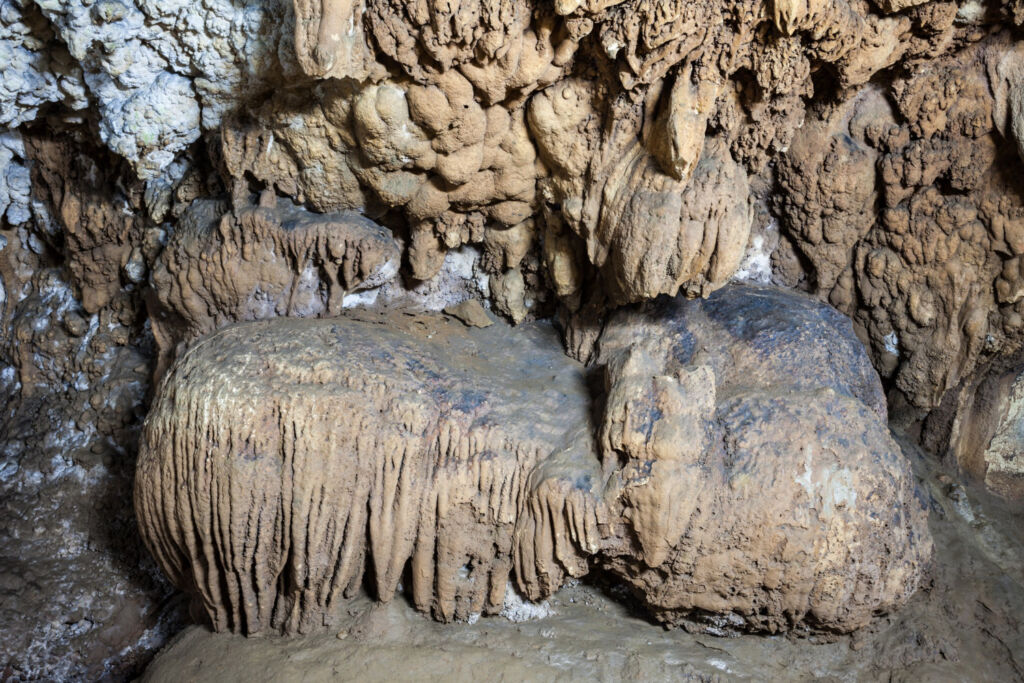
Famous Karst Landscapes Around the World
Have you ever dreamt of walking through a forest of stone, diving into a mysterious underwater sinkhole, or exploring vast cave systems older than humanity? Karst topography offers these wonders and more. Let’s take a whirlwind tour of some of the planet’s most iconic karst landscapes, each showcasing the power of nature’s transformative touch.
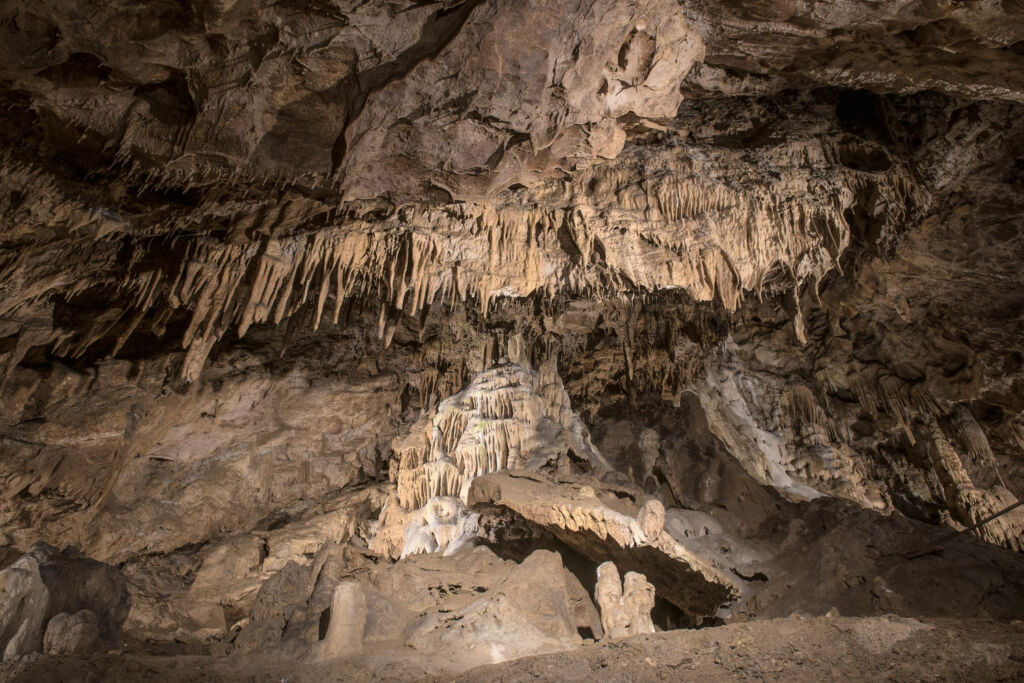
By exploring these unique sites, we’ll gain a deeper appreciation for the diverse and awe-inspiring formations that karst processes create across the globe.
Shilin Stone Forest (China)
- This UNESCO World Heritage site features a labyrinth of towering limestone pinnacles resembling a petrified forest.
- Legends and myths surround these stone formations, adding to their mystique.
Nahanni National Park Reserve (Canada)
- Rugged karst mountains, thundering waterfalls, and vast cave systems define this remote wilderness.
- The park protects a pristine ecosystem and is a testament to ongoing karst processes.
Caves of Slovenia
- Slovenia is synonymous with spectacular karst topography, boasting thousands of caves.
- These caves feature otherworldly stalactites, stalagmites, and underground rivers.
The Burren (Ireland)
- This windswept limestone plateau features a stark, moon-like landscape with grikes (fissures) and disappearing streams.
- Unique flora and ancient human history add to its allure.
Mammoth Cave National Park (USA)
- Home to the world’s longest-known cave system, Mammoth Cave offers miles of subterranean passages.
- Cave formations and underground wildlife showcase karst processes in action.
Puerto Princesa Subterranean River National Park (Philippines)
- An underground river winds through a spectacular cave system before emptying into the sea.
- Home to unique cave-adapted species, it’s a haven for karst biodiversity.
Conclusion: Karst Topography: A Testament to the Power of Nature
From disappearing rivers to towering stone forests, karst topography showcases nature’s incredible sculpting power. Over millennia, a seemingly simple combination—water, carbon dioxide, and soluble rock—has transformed landscapes into intricate wonderlands.
This blog post has aimed to guide you through the secrets of karst topography. Understanding the processes behind these unique formations gives us a deeper appreciation for the dynamic forces that shape our planet.
Here’s a recap of what we’ve explored:
- What defines karst topography: The dissolving power of water on soluble rock leads to unique features.
- How karst landscapes form: A slow dance of chemistry and erosion creates caves, sinkholes, and more.
- Why karst matters: These landscapes are hotbeds of biodiversity and hold vital water resources.
- Threats to karst environments: Pollution and instability highlight the need for protection.
- Karst’s topography reminds us that the Earth is a work of art in constant evolution – a magnificent testament to nature’s relentless and creative forces.


